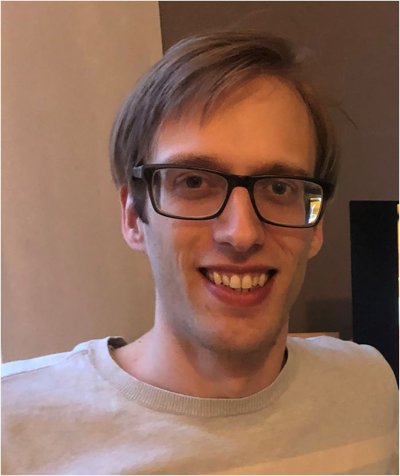Extending hybrid integrated diode lasers to multi-frequency oscillation
Jesse Mak is a PhD student in the department Laser Physics & Nonlinear Optics. Supervisor is prof.dr. K.J. Boller from the faculty of Science & Technology.
 Diode lasers with low-loss dielectric feedback circuits based on hybrid integration are attractive because they are compact, can be efficiently driven via an electric current, and can be seamlessly integrated with advanced waveguide circuits. A central motivation to investigate these lasers is that they offer a significantly increased cavity photon lifetime, which has enabled single-frequency lasers with an extremely narrow intrinsic (Schawlow-Townes) linewidth of the laser frequency.
Diode lasers with low-loss dielectric feedback circuits based on hybrid integration are attractive because they are compact, can be efficiently driven via an electric current, and can be seamlessly integrated with advanced waveguide circuits. A central motivation to investigate these lasers is that they offer a significantly increased cavity photon lifetime, which has enabled single-frequency lasers with an extremely narrow intrinsic (Schawlow-Townes) linewidth of the laser frequency.
In this thesis, we extend this linewidth narrowing concept beyond the generation of only a single frequency, using long, tunable feedback circuits based on low-loss silicon nitride (Si3N4) waveguides. The generation of multiple frequencies with well-controlled frequency spacings opens up the path to additional applications that make use of other wavelength ranges, such as the technologically mature radiofrequency (RF) range, where information can be easily retrieved, processed, and stored using standard, low-noise electronics.
While Chapter 1 and 2 provide an introduction to the field and relevant background information on the laser concepts and waveguide components used in this thesis, in Chapter 3 we realize a tunable hybrid dual-frequency laser for generating narrow beat frequencies in the microwave and THz domain. Generating a microwave beat frequency in the order of 10 GHz as an example, we observe a narrow intrinsic linewidth of the beat frequency of around 2 kHz. This value is, to our knowledge, about a factor of 13 lower than the narrowest intrinsic microwave linewidth reported so far for microwave generation using fully chip-integrated dual-frequency lasers. Dual-frequency oscillation is made possible, i.e., spectral condensation due to the homogeneously broadened gain spectrum is counteracted, by carefully balancing the feedback from two highly frequency-selective mirrors based on microring resonators, which are both integrated on the same Si3N4 feedback chip. We find signs that the beat frequency shows an additional narrowing compared to what is expected from the individual linewidths of the two beating optical frequencies. We address this to the two frequencies being generated in the same gain medium, thus experiencing the same refractive index fluctuations.
In Chapter 4 we extend this approach to more frequency lines, by generating a set of equally spaced optical frequencies, i.e., an optical frequency comb, using a mode-locked diode laser. We demonstrate that also in diode laser frequency combs, the approach of cavity extension with dielectric waveguides leads to significant linewidth reduction of the individual laser lines. We observe a narrow linewidth of 34 kHz of the individual comb lines. At the time of publication this was the narrowest value for all fully chip-integrated frequency comb diode lasers, by more than a factor of seven. This chapter forms the first demonstration of frequency comb generation in a hybrid laser with sharp narrowband feedback without a saturable absorber, which is different from the standard approach to passive mode-locking. Instead, comb generation can be addressed to relaxation oscillations becoming resonant with the beating of longitudinal modes.
Aiming on applications that require low repetition rates, e.g., for higher resolution and easier detection, Chapter 5 explores frequency comb generation in hybrid integrated diode lasers toward denser comb line spacings. So far, the line spacing or repetition rate of mode-locked diode lasers based on pulsed light (amplitude modulation, AM mode-locking) seems to hit a fundamental lower limit in the order of 1 GHz. This limit is caused by the short lifetime of the excited charge carriers in diode lasers (about 1 nanosecond). An option to bypass and thus effectively remove this limit may be to impose frequency modulation (FM) on a laser's spectral dynamics, instead of imposing AM on the power dynamics. In Chapter 5, via a numerical investigation, we confirm that the mode-locking technique presented in Chapter 4 (based on narrowband feedback) has a strong component of FM mode-locking. We demonstrate that indeed this technique enables stable frequency comb generation at a repetition rate of 225 MHz, i.e., well below the named limit of around 1 GHz.
In addition to passive mode-locking, we numerically demonstrate hybrid mode-locking via pump current modulation for removal of timing jitter. We find that modulating the pump current, even though this is an AM technique, narrows the RF beat width at –40 dB by a resolution limited factor of 23 at a repetition rate of 225 MHz.





